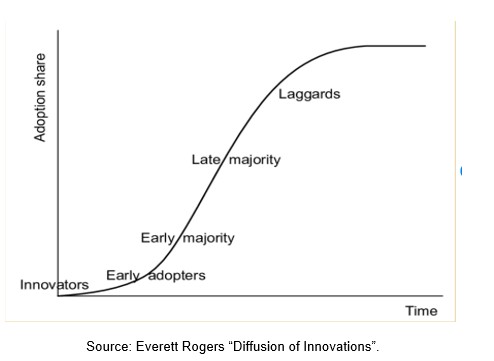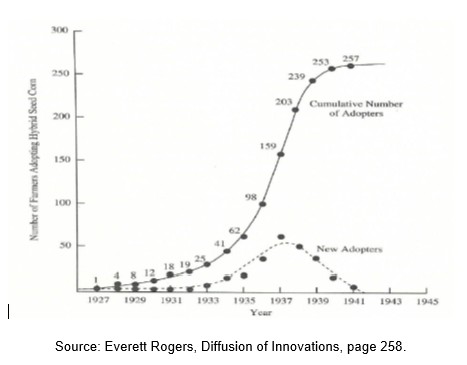1, October 2025
What would Schumpeter say about Canada Post?
Joseph Schumpeter was the Austrian economist who is best known for the term “creative destruction”. He argued that economies progress through cycles of innovation as new technologies arise and displace older ones. New technologies are pioneered by entrepreneurs (or entrepreneurial companies), and the old technologies – and the companies that use them – are displaced and often face collapse unless they are able to pivot to the new technology. This is very disruptive to the firm being displaced, which often fights tooth and nail to retain the business, not recognizing that the change is inevitable.
There is a long history of these displacements. Some recent examples include:
- Kodak, where film photography was displaced by digital photography, that led to Kodak’s bankruptcy in 2012. The curious aspect of this story is that Kodak actually invented digital photography, but its corporate culture did not allow it to change focus to the new technology until it was too late.
- Blockbuster video, where streaming services gradually displaced home video and game rentals, leading to it declaring bankruptcy in 2010. At its peak in 2004 Blockbuster employed 84,300 people worldwide and operated 9,094 stores.
- Blackberry pioneered secure mobile email but did not appreciate the role that apps played and struggled to compete with the iPhone and Android phones. In 2022 Blackberry got out of the smartphone business.
- A counter example is electric vehicles, where the new technology was pioneered by an outsider (Tesla), but the incumbent firms recognized the threat and were able to pivot to make EVs.
Overall pattern.
The literature on diffusion of innovation shows that the diffusion typically takes the form of an “S” shaped curve, as shown below. Initially uptake is led by early adopters, who are inclined to try new things. After this, there is a long, fairly linear trend where the new technology gradually becomes mainstream and is adopted by the majority of the market. Eventually this slows down, and the market remains with a small group of laggards before finally disappearing. The old technology often isn’t entirely displaced. For example, natural rubber has been almost completely displaced by synthetic rubber in tires, but some tires, for example airplane tires, are still made using natural rubber because synthetic rubber can’t match their properties.

This curve can be modeled mathematically using the Fisher-Pry substitution model.
Often the substitution follows the S curve remarkably closely. The classical example is the adoption of hybrid corn in Iowa in the 1930’s, shown below. The number of new adopters (the lower graph) closely follows a bell-shaped curve.

So, what about Canada Post?
Canada post runs two businesses – letter delivery and parcel delivery. The market for letter delivery has declined steadily for at least the last 20 years as shown in the diagram below. The market for parcel delivery has expanded, but Canada Post’s business strategy did not allow it to maintain its previously very strong market share which has declined significantly. We will just consider the letter business.
You can think of two technologies competing for letter delivery – hand delivery of a physical letter, and email. Initially hand delivery had a 100% market share as email hadn’t been invented. When email is first introduced a few early adopters try using email for communication instead of sending a letter. Eventually this idea catches on, and more and more people start using email. This trend corresponds to the almost straight line in the Canada post diagram below.
Canada Post delivery of letters

Conclusion
Schumpeter would consider Canada Post’s letter business a classic case of creative destruction, as the new technology (email) replaces the old technology (hand delivery.) The replacement is very advanced and will be impossible to reverse, given the many advantages of email. It is very likely that a small fraction of the market will remain for people unable to use email.
As we have seen from the other examples, Canada Post has to either adapt to the new reality or face extinction (unless supported by government subsidies.)
Peter Josty

Leave A Comment
You must be logged in to post a comment.